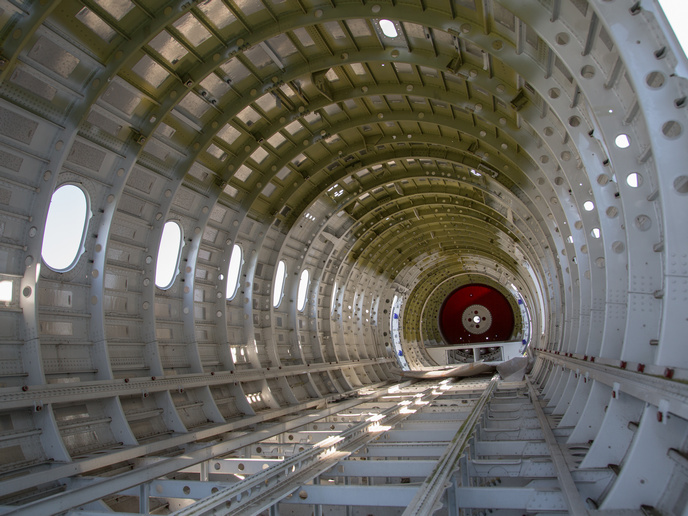A new approach to testing advanced airframe materials
Responsible for 2 % of the world’s total CO2 emissions, the aviation sector must work to reduce its carbon footprint. A good place to start is the airframe itself. “The heavier the plane, the more fuel used,” says Alfonso Carpio Rovira, R&D programme manager at Applus Laboratories(opens in new window). “Accounting for between 20 % and 30 % of the aircraft’s total weight, making the fuselage lighter could go a long way in decreasing fuel consumption and thus carbon emissions.” Just how much saving are we talking about? According to some estimates, airframes made of aluminium-lithium (Al-Li) alloys can reduce an airframe’s weight by 10 %, resulting in a 20 % increase in fuel efficiency. To help aircraft designers leverage the carbon-cutting potential of lighter airframes, and with the support of the EU-funded DEMONSTRATE(opens in new window) project, Applus, together with Athena(opens in new window), set out to evaluate the structural strength of two new airframe designs – one in AI-Li alloys and one in thermoplastic.
Advanced simulation and testing methodologies
As a safety-critical structure, each component of a new airframe must undergo vigorous testing and validation – which is where the DEMONSTRATE project comes into play. “Our goal was to demonstrate the structural integrity of these fuselage panels using advanced simulation and testing methodologies coupled with experimental data,” explains Carpio Rovira. The first step in doing this was to develop the necessary technology, including a virtual testing method for defining the stiffened panels’ boundary and loading conditions. “Ensuring correct boundary conditions using a flexible tool with multiple degrees of freedom proved more challenging than expected,” adds Carpio Rovira. To overcome this potential roadblock, Athena developed a realistic finite element model (FEM) for predicting behaviour and providing guidelines for the optimum design of the tooling. Other key technologies include a wide range of measurement techniques and advanced simulation methods.
A full-scale test bench
These technologies were then integrated into an innovative, cost-efficient, easily adaptable fuselage panel full-scale test bench. The bench was used for an optimised test campaign of the composite and metallic panels. Specifically, researchers used the bench to conduct static tests on advanced metallic and thermoplastic curved, integrally stiffened full-scale panels, like those used on a typical business jet fuselage. It was also utilised to perform an endurance test on an integrally stiffened 4th generation AI-Li curved panel under real-world conditions.
A mutually beneficial endeavour
From this test campaign, researchers determined that this new test methodology and tooling can cut test time and cost in half. “This is an important result for Applus, as being able to improve the time and costs of our services without sacrificing accuracy will increase the competitiveness of our testing activities and help bring these important materials to the market faster,” says Carpio Rovira. Athena also benefits from its involvement with the project. The company plans to further develop its FEM models for use in academia and industry. “The acquisition of a large amount of information using accurate digital image correlation opens the door to a better correlation of experiments with FEM models,” adds George Lampeas from Athena. “This can allow for a more accurate validation of the latter while also improving their reliability and therefore usefulness in industrial development environments.”







